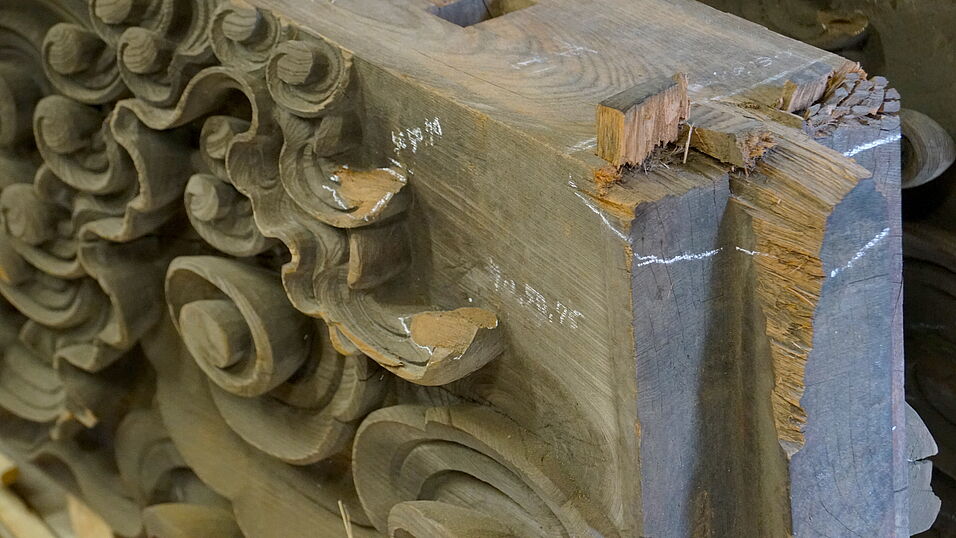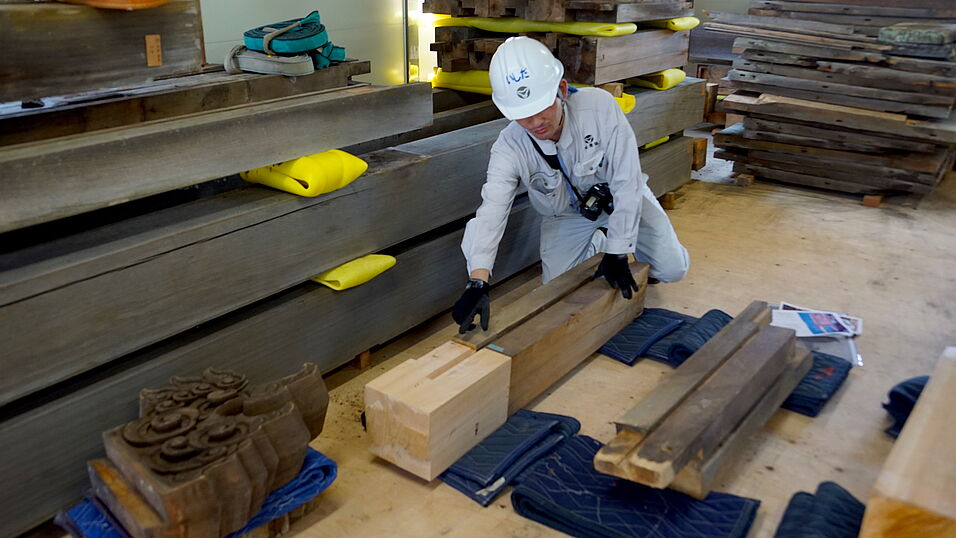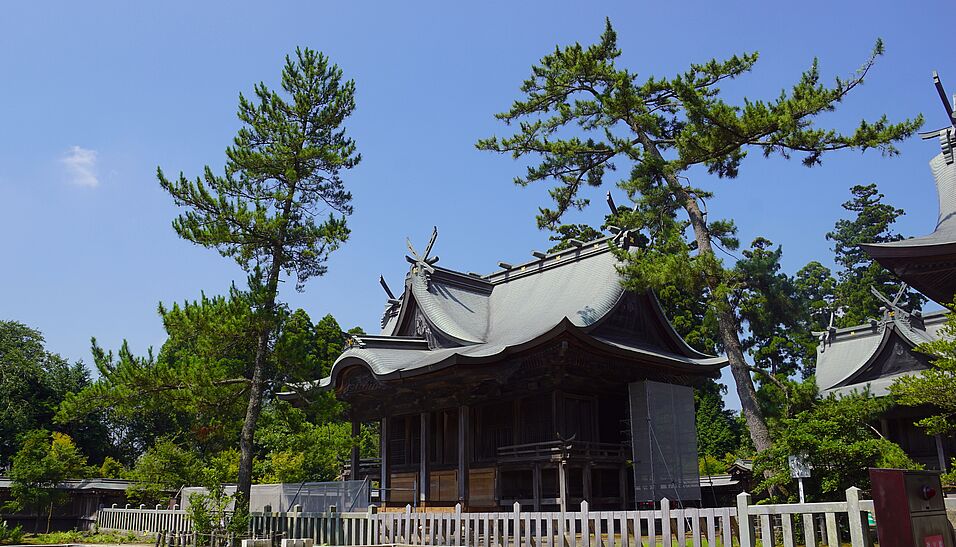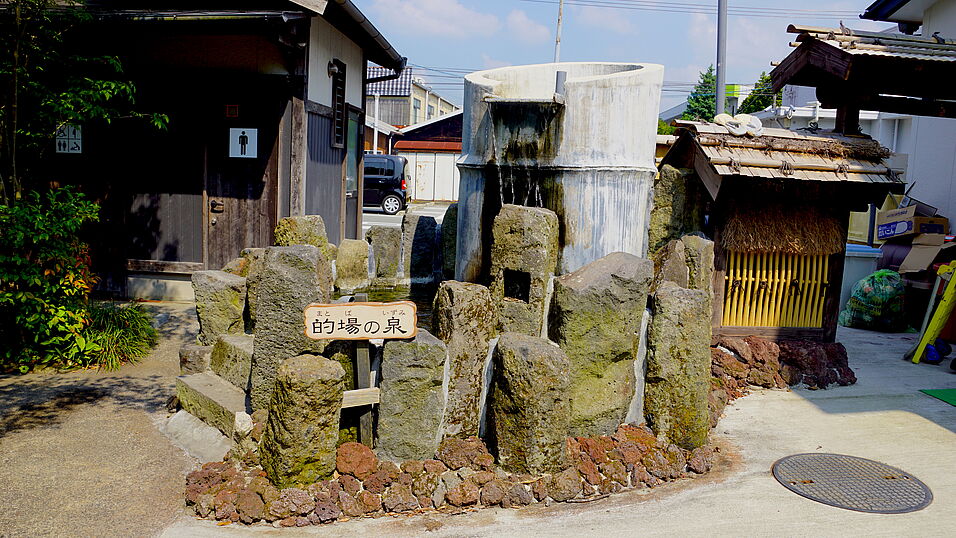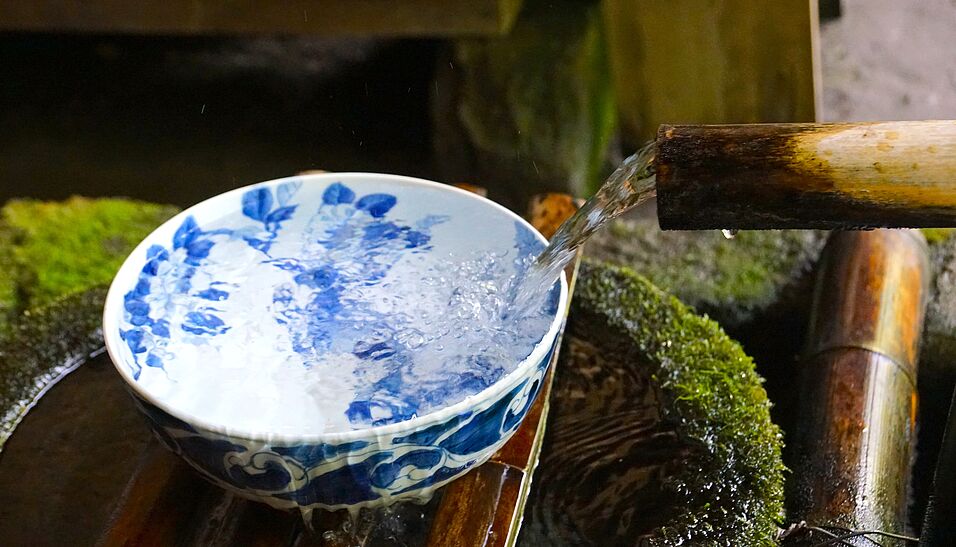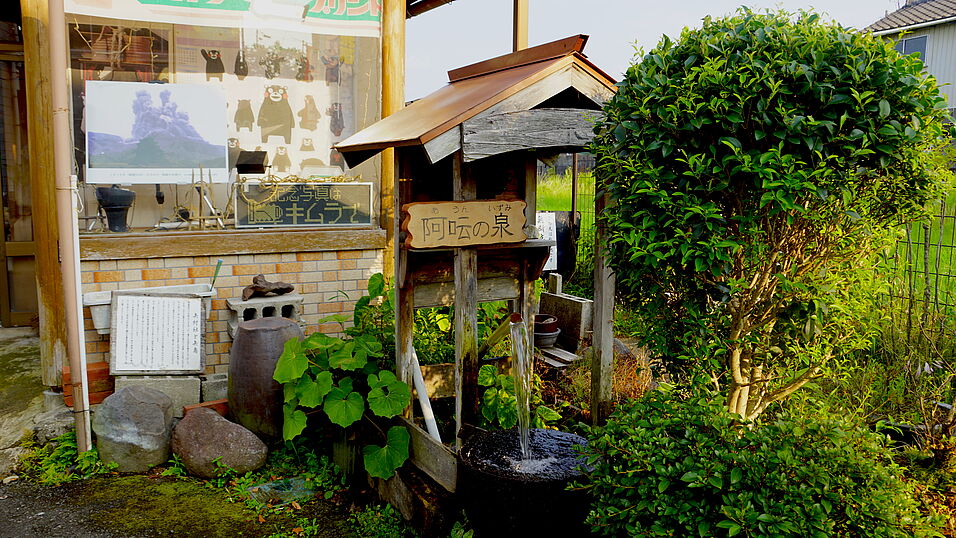by Florian Ramberger & Julia Ramprecht
Our second day in Aso wasn't going to let the heat subside. We could feel the scorching heat since the early morning hours. However, we weren't going to let that keep us down. Our first official visit to the Aso shrine ( 阿蘇神社)was also the first thing on this day's agenda. After crossing paths with the shrine priest from the Kokuzo shrine(国造神社) in Teno (手野), Miyagawa Tsuneyuki, we received a warm welcome from Ikeura Hidetaka, a historian and priest at the Aso shrine. After a short purifying ritual, we were led into the shrine, past barrier tape since this part of the complex is still under reconstruction after receiving damage in the earthquake 2 years ago. Ikeura-san gave us a short overview over the farming festivals that coincide with harvest and sowing of the different crops. Our interest is mostly on one of these festivals, as we will be partaking in two iterations of said special occasion: the Onda-matsuri (御田祭). The first iteration we will witness on July the 26th in rural Nishiteno, while the other one will take place two days later in the a little more urban Miyaji, at the Aso shrine. As we will be seeing two different versions of the same festival, we will be able to see different rites and ceremonies taking place at these two communities. Of course this only heightens our excitement going into next week.
However, as he is a historian as well as a priest, he also shared some well-founded criticism with us. He explained, that the media put so much emphasis on the damage sustained by the Aso-shrine in the earthquake two years ago (14th and 16th of April 2016), that it became a symbol of the catastrophe (as well as Kumamoto Castle (熊本城)). This medial focus left out many of the other holy sites in need of reconstruction. Ikeura Hidetaka expressed his gratitude for all the donations received that made the rebuilding of the Aso shrine possible. On the other hand he expressed that these donations now have become more of a burden than a blessing. Every donation has to be answered with a letter of gratitude, which is an enormous effort considering the plentifulness of donations. He will also no longer participate in rebuilding efforts on behalf of the shrine, as this would put even more of a spotlight on the Aso shrine, which is already too present in the media. A catastrophe and all that follows should always be viewed sceptically. Although every form of help is something to be thankful for, if it is not asked for, it may just be a forceful intrusion into a person's life and/or their surroundings. Something to also consider when remembering the Tohoku triple catastrophe. This makes, as stressed before, Ikeura Hidetaka more than just a shrine priest. He is also a sceptical historian who clearly expresses and defends his views when talking to city officials. A trait that is not present in everyone that shares his profession.
After the theory came a lesson in more practical things. Rebuilding efforts at the Aso shrine are in full force. Thankfully, three men from the bureau of the preservation of historical monuments (文化財兼即物保存技術会). They showed us their plans and blueprints on how they plan to make the damaged or destroyed buildings of the Aso shrine complex rise like phoenix from the ashes. They plan on doing this with as many of the original construction parts as possible, which takes a lot of historical and technical knowledge. We were shown the fine differences in the ornamental pieces. Pictures turned into real works of art as we emerged from the shadows of the shrine complex and entered the nearby worksites where different pieces in different stages of reconstruction are stored. The most notable part about this situation is, that not just the technical side is involved in the reconstruction efforts. A vivid exchange takes place between the historically well versed shrine priest and the technial experts. A perfect example for interdisciplinary cooperation.
Directly afterwards we were briefed on our agenda for the afternoon. In small groups we were to look at the use of space of one street in Miyaji. Should we stumble across something worth an explanation, we were asked to ask the people around us, to converse with the locals. However, the 12 o'clock chimes rang almost as loud as our stomachs, many teams decided on having a short lunch break right away. Revitalized and energized we then started our fieldwork part of the day.
Our team was allocated the federal highway 57 near the train station Miyaji. We started with the eastern side of the highway, where modern family restaurants dominated one side of the road, looking like somebody just put them there yesterday. However, their dominance was promptly broken, and they were replaced by buildings that clearly have seen a couple of decades. As to be expected of a federal highway, many of them were restaurants or businesses, although their state of business remained a mystery to us in most cases. Private residences also made up a sizeable chunk of buildings. In their case we also could not tell how many people exitted and entered them on a regular or even any basis.
The most difficult part of our day was the conversation with the locals. Mostly because most of them were zooming past us with estimated 50km/h. We can't really be mad at them. It was more than 30 degrees outside. We can understand the seductive powers of an air-conditioned car compared to a stroll around one's hometown. However, we met an incredibly likeable senior citizen from Kitakyūshū, who was on a daytrip to explore Kyūshū and was also wondering about a restaurant not being open for business. After a refreshing conversation about his vacation and our research goals we parted ways. He left for his home, while we went to the west side of the federal highway. This side showed us more car repair shops and workshops as well as civil service buildings. One building even claimed to be two things at once. There was a sign calling it the „heart building“ (ハートビル), a place for senior citizens, and one saying it belonged to the Kyushu Electric Power company. Either way it was one thing and that is empty. Since there was no one to ask about this, it's history remained a mystery to us.
In our evening meeting we learned, that the whole city did not see many pedestrians that day, at least not Japanese ones. All of us noticed a wealth of businesses looking for new staff. A lot of these ads were in the form a sign put up in the windows of said restaurant, but some were creative, like on a coupon or on a receipt. So, if anyone is looking for work, there are a lot of jobs up for grabs in Aso. We planned the next day and enjoyed the temperature slowly falling as the sun vanished out of sight. As the cicadas were about to drown out our voices we decided to call it a day and went back to our guesthouses....or to a Sentō...or to an Izakaya.


